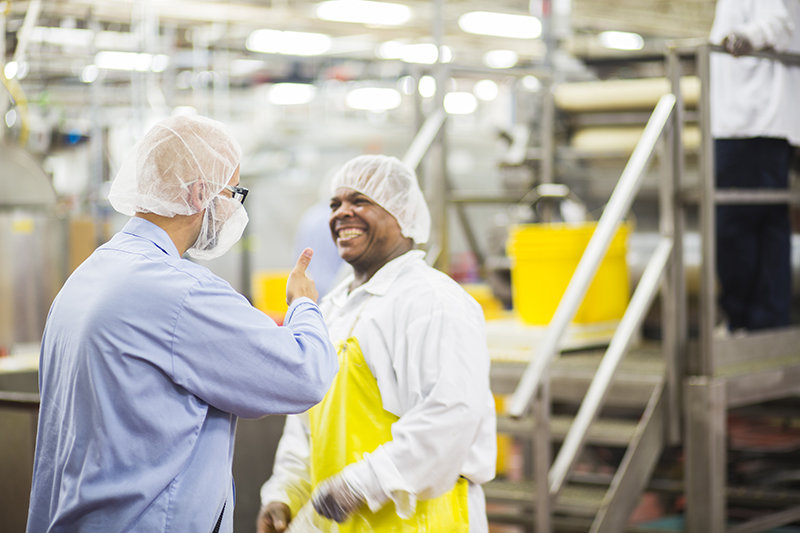After much anticipation, FDA has finally published the FSMA final rules. If you’ve had time to dig into the details, you most likely noted the new initiative that requires companies to measure food safety culture. The industry is also seeing SQF, BRC and other GFSI audit schemes ramping up discussions around measuring food safety culture. However, FDA and GFSI audits aside, how do you create a culture for sustained compliance with this initiative? Follow these 10 tips to ensure your food safety culture is constant and in line with the new requirements

1: Create a solid foundation of programs, procedures and policies
Have a preset annual schedule for review and update of all programs, procedures and policies. Don’t let the schedule slide because there are competing priorities. A small pebble is all it takes to start ripple effect in the company, making it difficult to recover.
2: Set clear expectations, driven from the top down
Everyone should follow the rules and guidelines—from visitors to the CEO to the plant manager to the hourly employee. A “no exceptions” policy will drive a culture that is sustainable and drive a “this-is-just-how-we-do-things” mindset.
3: Use record keeping to ensure that food safety culture is well documented and data-driven
Collect the data that is measureable and non-subjective to help drive continuous improvement. If you collect it, you must do something with it. Good documentation is imperative to proving you did what you said you were going to do, especially in the event of an audit. Be stringent in training, and review all documentation before it hits the file cabinet to ensure it is accurate and appropriate.
4: Implement a robust continuous improvement process
Forward momentum through a continuous improvement process cannot be achieved unless management nurtures the program. If you are not continuously improving, you are falling behind.
5: Have a 360-degree approach to employee engagement with 24/7 awareness and communication
Top-down communication is critical to highlighting the priorities and needs of an organization and will not be effective unless an organized program is in place. Organizations that are not making the necessary pivots to communicate with the multiple generations within their workplace today will struggle to sustain change.
6: Foster an atmosphere of mutual respect
Treat people as you would like to be treated, turn the other cheek, etc. There may be lots of adages you quote, but which one best describes your facility and the relationships with management and peers on a daily basis?
7: Be sure employees have consumer awareness for the products they produce
Do your employees know who the end consumer is of the product that they are producing every day? Does your culture include a review of consumer complaints and customer complaints with your frontline workers? Listening in to a call center is a very powerful way to help employees understand what affects consumers and how their job is critical to avoiding a food safety or quality issue.
8: Create accountability across the board
Hold folks who do not support the culture in which you are striving to develop or maintain accountable, regardless of their position or stature.
9: Provide positive reinforcement. It’s the best motivator
Work to catch people doing things right and make a big fuss when you do. Positive reinforcement for a job well done is the most powerful motivator. It helps keep every team member on board with food safety commitments.
10: Celebrate often
We spend too much time at work not to celebrate all the good things that are accomplished. Whether it’s a cake and recognition for those that served in the armed forces on Veterans Day or a successful launch of a new product—celebrations are a great way to recognize and reinforce your employees’ hard work. Identifying and correcting mistakes should also be celebrated; they are fertile ground for making changes and provide great nutrients for continuous improvement.






